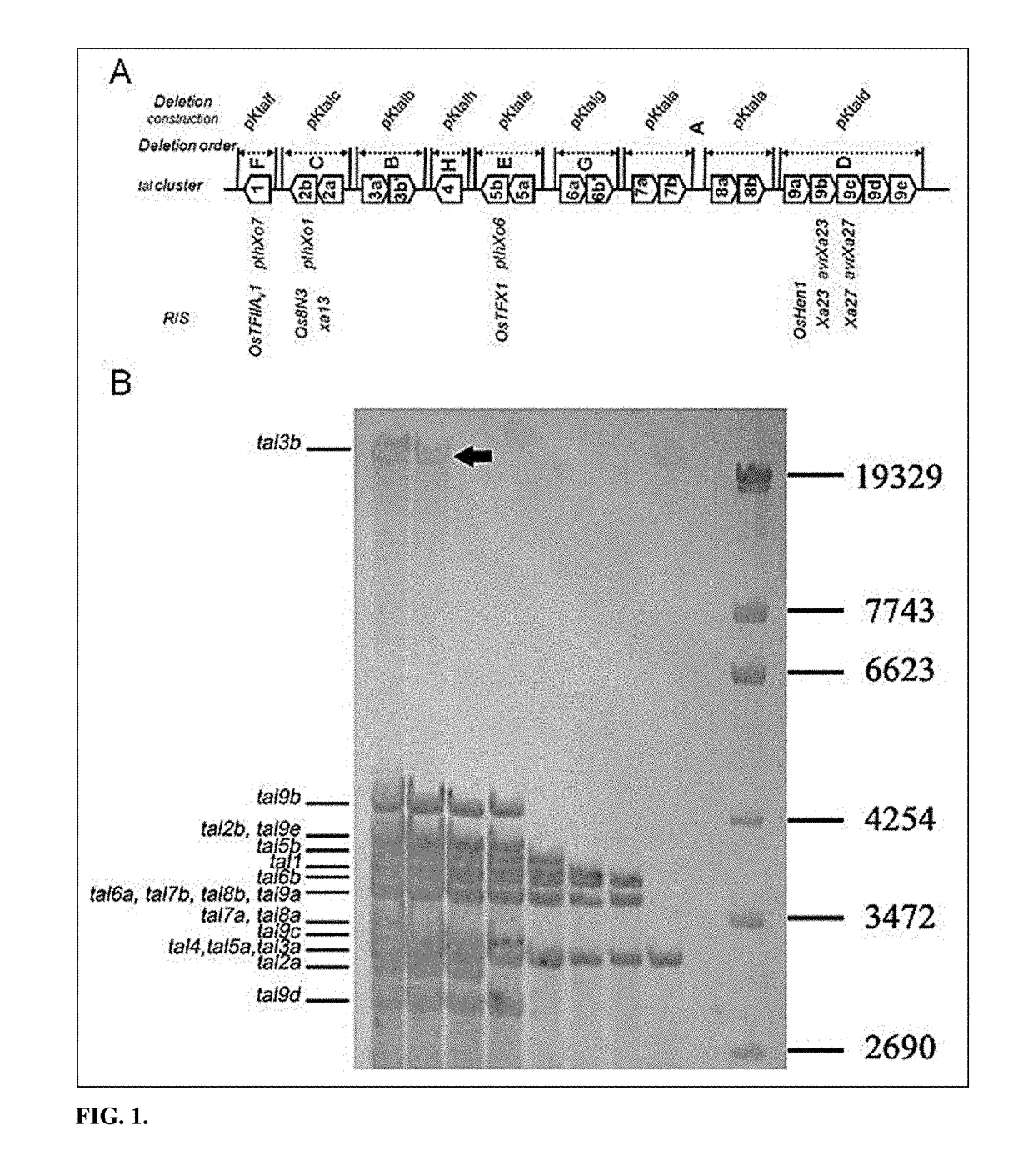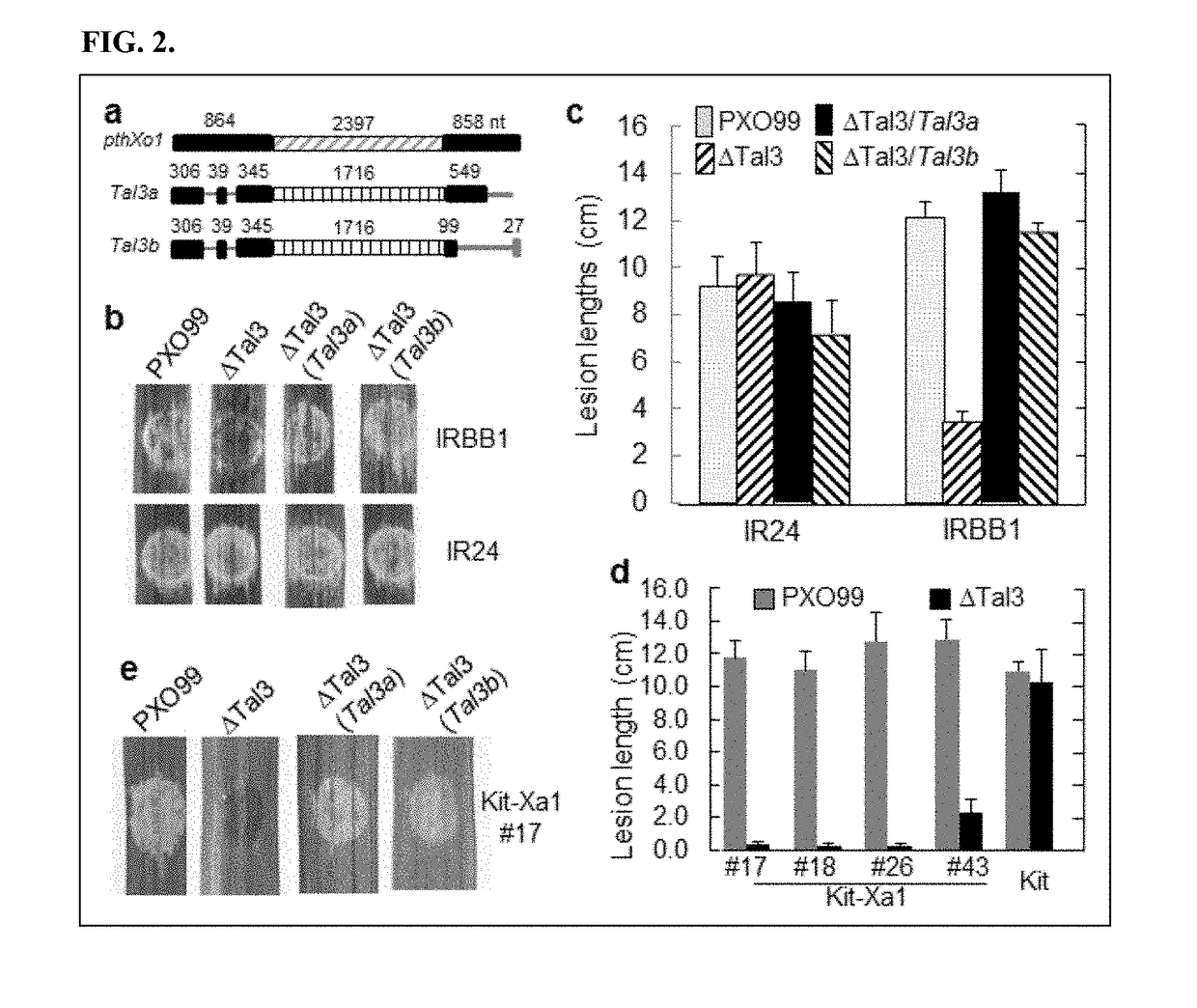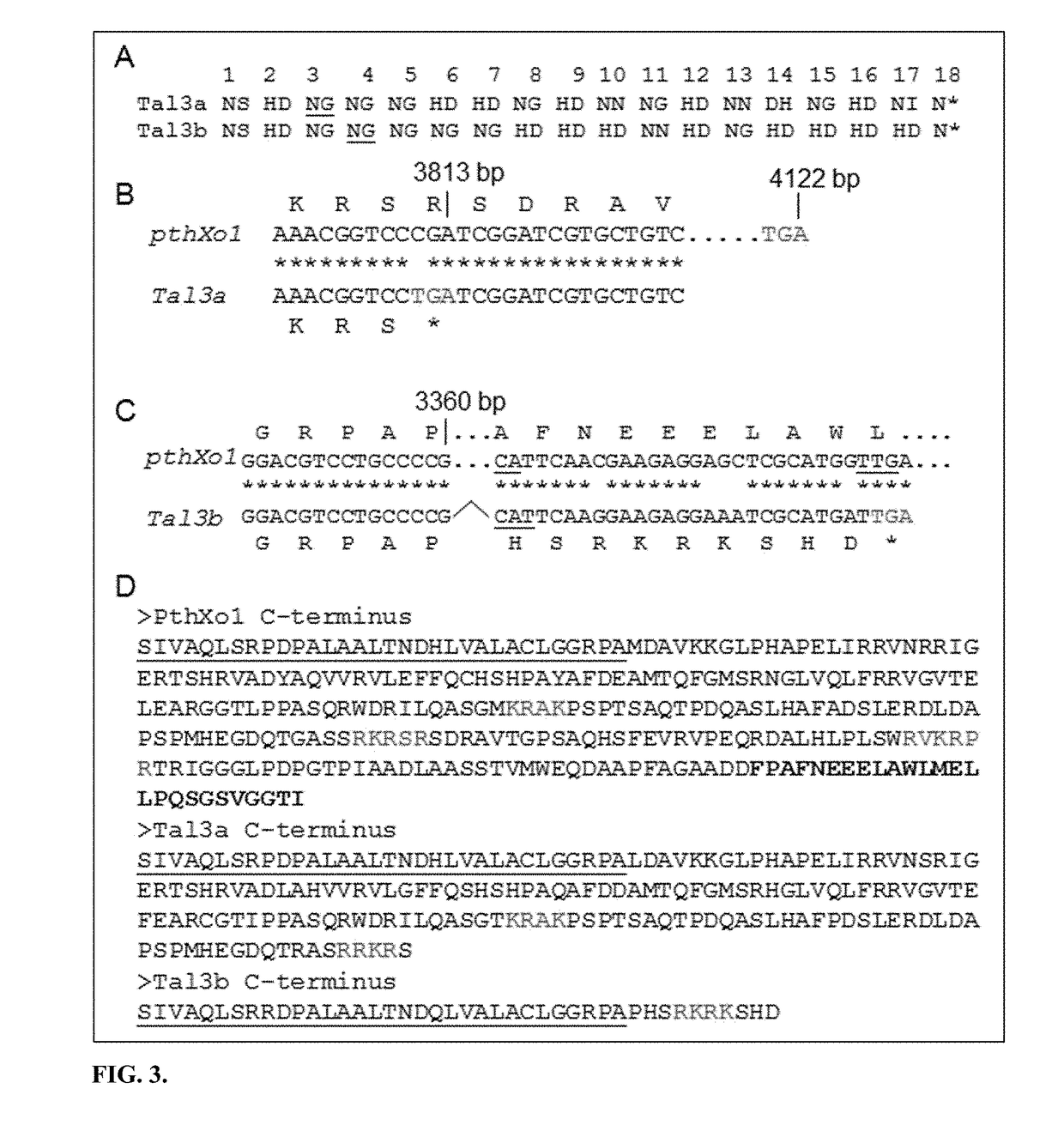Xa1-mediated resistance to tale-containing bacteria
a technology of bacterial tales and xa1 is applied in the field of xa1 to achieve the effect of broad-spectrum resistance and enhanced resistance to bacterial leaf streaks in plants
- Summary
- Abstract
- Description
- Claims
- Application Information
AI Technical Summary
Benefits of technology
Problems solved by technology
Method used
Image
Examples
example 1
[0246]The continuing battle between pathogens and their hosts has led to incredibly diverse virulence mechanisms in pathogens and counteracting defense mechanisms in their hosts. Pathogenic microbes and their host plants have followed a ‘zigzag’ course co-evolving new virulence strategies in pathogens and counteracting resistance mechanisms in hosts (1). Herein, Applicants identify a novel virulence mechanism by two bacterial pathogens that use iTALEs (interfering transcription activator-like effectors) to overcome disease resistance. iTALEs are truncated TALE variants expressed from the neglected “pseudogenes” in Xanthomonas oryzae pv. oryzae (Xoo) and X. oryzae pv. oryzicola (Xoc). Xa1, a NBS-LRR resistance gene, confers resistance against Xoo and Xoc by recognizing their multiple copies of TALEs with required nuclear localization of proteins. Xa1 homolog gene, Xa2, similarly functions to provide broad-spectrum resistance. However, iTALEs prevalent in the majority of pathogen isol...
example 2
Xa1 Transgenic Wheat Plants Confer Resistance to Wheat Bacterial Blight
[0316]As the most widely cultivated crop with the highest trading value, wheat (Triticum aestivum L.) provides about 20% of our daily calories and protein supply (FOA Stat. 2015, http: / / www.fao.org / faostat / en / #home). Like other corps, wheat also suffers yield losses due to biotic and abiotic stresses. The biotic stresses include fungal diseases such as leaf rust, bacterial diseases and insect pests. Bacterial blight of wheat, caused by Xanthomonas translucens is one of severe wheat bacterial diseases. The disease is also called bacterial leaf streak when occurring on leaves or black chaff when on the glumes. Yield losses to the blight could range as high as 40% in the most severely infected fields to generally 10% or less (e.g., in Idaho) (Forster et al. 1986). If severely inflicted, the wheat spikes may be sterile (Forster and Shaad 1988). Currently there is no effective control measures for wheat blight. Geneti...
PUM
| Property | Measurement | Unit |
|---|---|---|
| speeds | aaaaa | aaaaa |
| flowering time | aaaaa | aaaaa |
| temperature | aaaaa | aaaaa |
Abstract
Description
Claims
Application Information
 Login to View More
Login to View More - R&D
- Intellectual Property
- Life Sciences
- Materials
- Tech Scout
- Unparalleled Data Quality
- Higher Quality Content
- 60% Fewer Hallucinations
Browse by: Latest US Patents, China's latest patents, Technical Efficacy Thesaurus, Application Domain, Technology Topic, Popular Technical Reports.
© 2025 PatSnap. All rights reserved.Legal|Privacy policy|Modern Slavery Act Transparency Statement|Sitemap|About US| Contact US: help@patsnap.com



